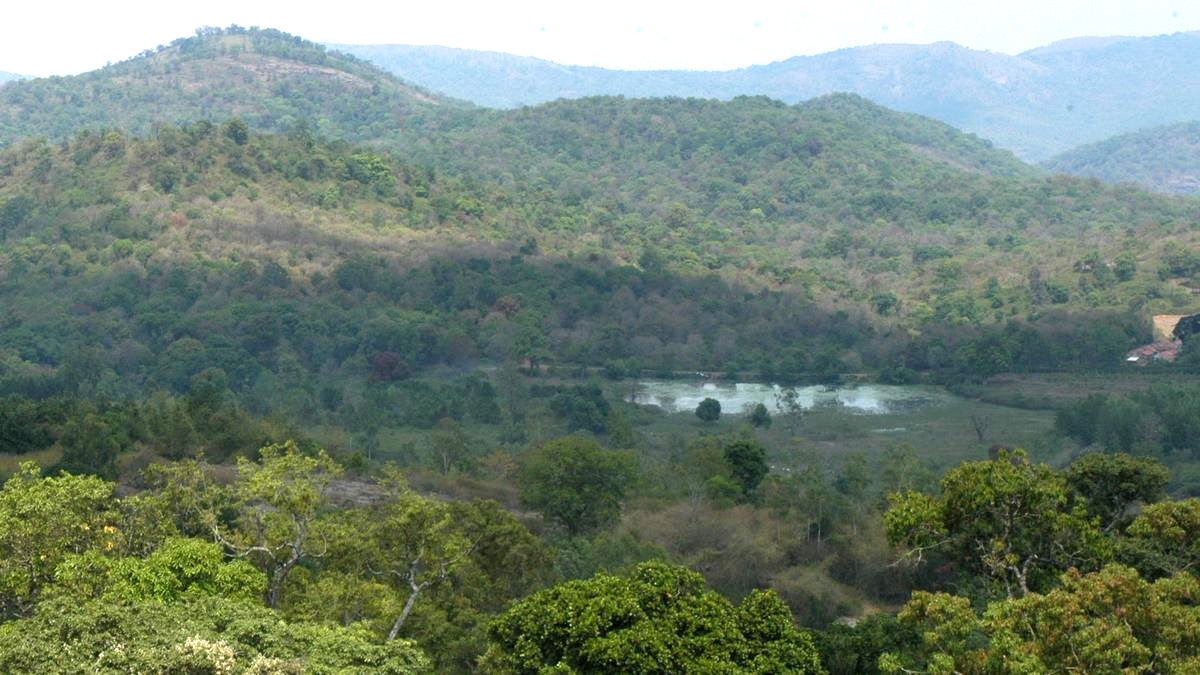| 13,000 sq km of forest area encroached in 25 states, UTs | | |  New Delhi, Apr 1: New Delhi, Apr 1:
Agencies
Over 13,000 square kilometres of forest area -- more than the total geographical area of Delhi, Sikkim and Goa combined -- is under encroachment in 25 states and Union territories that have so far submitted data to the Union environment ministry.
Ten states are yet to submit data on forest encroachment.
Last year, the National Green Tribunal (NGT) took suo motu cognisance of a PTI report that cited government data showing 7,50,648 hectares (7,506.48 square kilometres) of forest area -- more than five times the size of Delhi -- was under encroachment.
The NGT had directed the ministry in April last year to compile the details of encroachment of forest areas in all states and Union Territories in a prescribed format.
In a report submitted to the NGT last week, the ministry said that as of March 2024, a total of 13,05,668.1 hectares (or 13,056 square kilometres) of forest area was under encroachment in 25 states and Union territories that had provided data.
These states and Union territories are the Andaman and Nicobar Islands, Assam, Arunachal Pradesh, Andhra Pradesh, Chandigarh, Chhattisgarh, Dadra and Nagar Haveli and Daman and Diu, Kerala, Lakshadweep, Maharashtra, Odisha, Puducherry, Punjab, Tamil Nadu, Tripura, Uttarakhand, Uttar Pradesh, Jharkhand, Sikkim, Madhya Pradesh, Mizoram and Manipur.
States and Union territories that are still to submit the data and details on forest encroachment are Bihar, Haryana, Himachal Pradesh, Rajasthan, Telangana, West Bengal, Nagaland, Delhi, Jammu and Kashmir and Ladakh.
Forest area or The Recorded Forest Area (RFA) includes land officially designated as forest by the government, even if it does not have tree cover.
RFA is further divided into three categories: reserved forests, which have full protection, with activities such as hunting and grazing generally banned; protected forests, where some activities are allowed unless specifically restricted; and unclassed forests, which are not classified as reserved or protected.
This is different from forest cover, which refers to the actual area with tree canopy (more than one hectare with tree canopy density of at least 10 per cent), regardless of legal status. Forest cover includes forests inside and outside recorded forest areas, such as plantations, community forests and private lands with tree growth.
According to the ministry report, Madhya Pradesh had the highest forest encroachment, with 5,460.9 square kilometres affected, as of March 2024.
Assam has 3,620.9 square kilometres of forest area under encroachment.
A total of 863.08 square kilometres of forest land in Karnataka is under encroachment, followed by 575.54 square kilometres in Maharashtra, 534.9 square kilometres in Arunachal Pradesh, 405.07 square kilometres in Odisha, 264.97 square kilometres in Uttar Pradesh, 247.72 square kilometres in Mizoram, 200.40 square kilometres in Jharkhand and 168.91 square kilometres in Chhattisgarh.
Tamil Nadu has 157.68 square kilometres of encroached forest land, Andhra Pradesh 133.18 square kilometres, Gujarat 130.08 square kilometres, Punjab 75.67 square kilometres, Uttarakhand 49.92 square kilometres, Kerala 49.75 square kilometres, Tripura 42.42 square kilometres, the Andaman and Nicobar Islands 37.42 square kilometres and Manipur 32.7 square kilometres.
The ministry's report said encroachment had so far been removed from 409.77 square kilometres of forest land. However, it is unclear if this area was excluded from the total forest land under encroachment as of March 2024.
Researcher CR Bijoy said the extent of forest encroachment could not be determined until the Forest Rights Act was fully implemented, and all claims and reviews were settled.
"Only when the process is completed fairly and transparently can we determine who owns the land and who is an encroacher," he said.
The Forest Rights Act, 2006, recognises the rights of tribals and forest-dependent communities over the land they have lived on and protected for generations. However, its implementation has been plagued by violations and a large number of claims have been wrongly rejected.
The Supreme Court is set to hear the case of Wildlife First and Others vs Union of India and Others on April 2 that challenges the constitutionality of the Forest Rights Act. |
|
